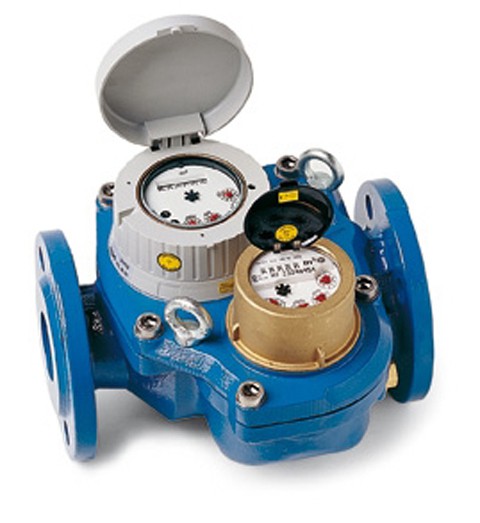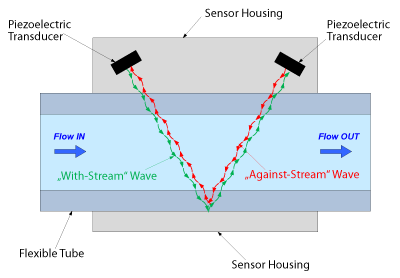Okay, so pretend you aren't a hacker. You don't care about the latest in home automation, you don't know a volt from an amp, and you think it's okay to use that crappy 16-gauge 6' extension cord with a 1500W space heater. But you DO care about your power bill and you want to see how much your appliances are costing you, so you buy one of these at your local big-box home improvement store:

What makes the Kill-A-Watt so successful?
To start with, the name is a great pun that helps users link their electric bills (measured in kilowatts) with the actual power draw of a typical appliance (probably in the tens or hundreds of watts). This might sound simple, but I think it makes the product a heck of a lot more accessible to a broad range of consumers. Better, reducing your power bill is all about 'killing watts'--perfect!
More importantly, the meter is dead simple to use. Plug it in line with your appliances, plug it into the wall, turn it on, and BAM! Real-time power consumption information. I should confess that I don't own a Kill-A-Watt (and haven't used one), but I'm guessing they have some other basic diagnostic functions on board too--maybe a datalogger that measures total watt-hours along with instantaneous readings. But all of this would be worthless if you had to hire an electrician to install it! The Kill-A-Watt shines because it reduces a complex subject (energy efficiency improvement via increased data visibility and habit change) to a simple game (look, a big number! that means money. make the big number smaller!).
Water is the next frontier. Not natural gas--it's cheap now, but if/when it gets substantially more expensive we've already got a decent infrastructure to switch over to electric heating appliances. Water, on the other hand, is a renewable but finite natural resource. It's already getting much more expensive, and the current drought in the western US is putting a massive strain on our current usage habits. Regulations have evolved in an attempt to reduce personal consumption rates, but 20-minute showers (something I'm sometimes guilty of taking) will only really stop when we understand how much they cost. It's worth stating here that the majority of water use in the US is taken up by agriculture; even so, it's something we all need to take seriously.
So why don't we have point-of-use metering? The Kill-A-Watt fills the gap between a home's power meter (which nowadays can be pretty sophisticated) and each individual device. In other words, you can meter the power consumption of your TV while it's off without having to shut down every other electrical device in the house to get a realistic reading. However, point-of-use water meters, as far as I know, really aren't a thing. The devices most people are familiar with are mechanical turbine meters that need to be plumbed in permanently--not an issue for a plumber or a handy homeowner (although they might violate local code depending on the device), but definitely a barrier to adoption for the typical user. It would be like replacing individual receptacles with flush-mount Kill-A-Watt meters: not practical at all.
I spent four years selling process instrumentation to a variety industries in greater Minnesota. In comparing this work with my exposure to the hobby world, I've always been struck by the massive technological gap that exists between DIY-grade sensors and industrial instruments. I'm not just talking about durability and size; sure, industry does have access to big expensive mechanical flow meters:

... but that's not really the point. When I was on the road, I never sold mechanical flow meters. Okay, I had a few customers that wanted to hold on to legacy equipment, or had very specific reasons for preferring a device with moving parts, but these examples were the exception to the rule across a wide range of industries and applications. Instead, we used superior technologies. Gas flow measurement? Thermal dispersion. Conductive liquid? Electromagnetic (and no, not the hall-effect-based turbine wheels). Steam? Differential pressure or vortex shedding. Oils and nonpolar solvents? Coriolis.
Which brings me to my favorite flow measurement method: clamp-on ultrasonic.

The above picture shows transit time flow measurement; essentially, you look at the relative speed of a sonic pulse moving upstream and downstream through a medium (usually liquid, sometimes gas). The difference in these speeds is related to the speed of the medium through the pipe; if you know the pipe diameter, you can easily calculate volumetric flow rate. It's pretty neat to see in person--if the installation is done well, +/- 1% or better accuracy is achievable on large line sizes without ever cutting into the pipe. Flow measurement just got a lot more homeowner-friendly!
So this musing exists to contemplate the development of an extremely low-cost clamp-on ultrasonic flow sensor, primarily for helping homeowners (and apartment dwellers and everyone else) better understand their personal water consumption. The device would likely have the following characteristics:
- Presets for one or a few specific pipe sizes and types. Maybe 1/2" and 3/4" copper to start; PEX is getting more and more popular but it's going to be tougher since (a) it's not usually straight, and (b) plastic attenuates sound quite a bit more than metal. Industrial systems are often complicated by the fact that they need to support many pipe sizes, schedules, and materials.
- Decent, but not terrific, accuracy. +/- 5% should be adequate for most purposes, especially if the measurement is highly repeatable and can be zeroed in a no-flow condition.
- Battery powered, ideally. Rechargeable. Months of life.
- Connected, at least at some level. ESP8266 seems like a good idea here for data gathering purposes.
- Compact and easy to install. I envision some kind of 3D printed case that snaps onto the pipe in question and a simple setup routine (i.e. "is water flowing? no? good, I'll zero now").
Clamp-on systems have been around for decades--I figure most of the key transit time tech is well outside the realm of patent protection, so it's high time for an open source option. I'm holding off on making this a project yet mostly due to lack of time, but it might still happen. In the meantime--anyone have any thoughts? Have you seen a low-cost system built on the same technology out in the real world anywhere? Think we can get our heads around the complex signal processing requirements related to differentiating the correct pulses from a sensor?
 zakqwy
zakqwy
Discussions
Become a Hackaday.io Member
Create an account to leave a comment. Already have an account? Log In.
does anyone have links to a clamp ultrasonic that can be bought and interfaced with an esp8266 ?
Are you sure? yes | no
Apparently someone worked on something like that lately for at least air flow: https://www.youtube.com/watch?v=BNTSSxzm1GM
Are you sure? yes | no
I totally agree with the need... why not purchase an exsiting ultrasonic flow sensor and simply provide a good, Kill-a-watt like, user interface / logger with some simple electronics? An Arduino and LCD should be enough.
Are you sure? yes | no
nice idea. any further thoughts on how to get it going?
Are you sure? yes | no
A lot of the real tech is baked into the transducers themselves, which in my experience are usually fully encapsulated in epoxy and quite mysterious. I think the first step would be getting your hands on an old (but working) commercially available system and trying to replicate the electronics portion, using off-the-shelf transducers for the time being. Even if relying on eBay transducers is the norm for a bit, I'm guessing a ton of cost could be driven out of the electronics portion.
Realistically, someone needs to pick it up that has more time than I do :-)
Are you sure? yes | no
Wow, ultrasonic flow-measurement! Who'da thunk?
Are you sure? yes | no
It's a fascinating technology, and one that is long overdue for the DIY world!
Are you sure? yes | no